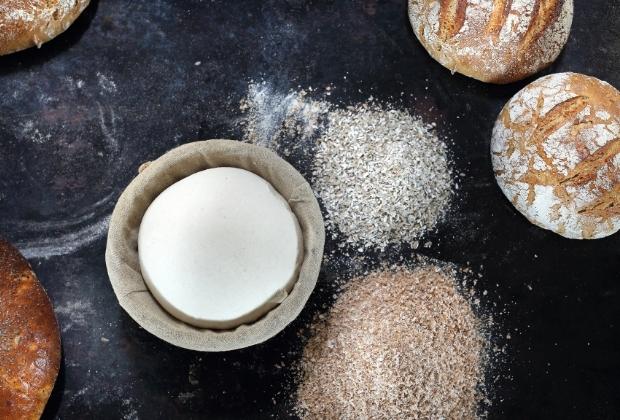Preparing bread occurred certainly as one of the fundamental chemistry analyses. Getting that earth grain (a dusty, movable, firm, and smooth material) combined into a coarse porridge with liquid could be converted into an inflated, flavorful, moistened mass that was fresh on the surface, solely by putting it near a flame, was an exceptional process. These flatbreads can, however, be observed in the globe as the Greek pita, Middle Eastern lavish, the Indian chapatti, and the American tortilla. And other varieties are available in our Science Assignment Help.
Excavators have associated the growth of rational civilizations with the development of what is presently considered the latest varieties of bread wheat. Bread is an example of the most adult cooked foods, attending back to Neolithic past when pieces of dough, unleavened, were put on heated rocks in the embers of a log burning. Bread quickly grew compatible with living itself.
The Initial step is to mix flour, salt, and yeast in a large bowl. Pour in the water and start mixing with a spoon.
Watch at everything that is occurring as you stir the components. The water is evaporating plus the dough is growing. The rough piece of dough is holding to your spoon. The dough is gradually joining collectively to form a cohesive piece. If the dough appears too moist do not append more flour, pause for 10 minutes for the starch to swallow the liquid. Starch (70% by mass of wheat flour) consumes the liquid you have mixed and later enzymes assimilate the starch and change some of that into sugar. These easy sugars remain a wonderful meal for yeast. In particular, you can combine the dough the date before baking, without the yeast. This loosens flavors plus sugars caught in the starch, which is excellent for the palette also for the yeast. Further explanations and chemical explanations are available in our Science Assignment Help.

The Second Step Says: Work the ingredients together into a dough and knead on a lightly floured surface for 5 minutes, or until the dough is smooth and elastic but not sticky.
As you press your mixture, twist, wrap and squeeze each time. The twisting nets the wind, the squeezing combines mechanical energy, warming the mixture gently also supporting the development of an interface of gluten, a stretchy protein network. The wrapping supports processing and provides an extra uniform gluten composition. Mark the mixture beneath your palms transform it into a flexible, smooth, and stretchy ball. Halt when the mixture stops to split under your palms and creates a soft, flexible covering. Inside the flour, there exist several large, chain-like protein units that remain insoluble in h2O. When moist, and following the influence of yeast, these proteins associate up end-to-end building a large interconnected chain of coiled proteins, the gluten. The glutinous mixture is both elastic and plastic; that is, it will turn its appearance under stress, yet it additionally opposes and goes back towards its initial state when the load is lifted. This enables the dough to grow, including the carbon dioxide gas generated through the yeast, and still resist sufficient to block the walls of the bubble dispersing to fracture point. Working the bread expands the gluten into flexible films that can be loaded with vapor to form bubbles, providing the bread with a springy construction as shown in the portrait present in our Science assignment help.
The 3rd Step: Return the dough to a clean bowl and cover it with an airtight plastic bag or a damp tea towel. Leave to rise in a warm place for 1-2 hours.
When we observe the mixture grow we understand it as a sparkling white pillow, getting bigger plus larger, filling up rather gently with thousands of small balloons within. As full as 80% of the bulk of bread is blank space. The bubbles hinder the chain of starch and gluten granules, breaking it into millions of extremely thin layers that complete the bubble walls. The carbon dioxide generated via the yeast spreads into whatever tiny bubbles it faces and extends them. Therefore, the more bubbles created throughout the formation of the mixture, the more expensive and more compassionate the resulting bread.
This Is Actually Not the End; there exist further steps that require more in-depth explanation so that it can be related to modern science and especially chemistry. So it is a very wise decision for students to get the best assignment help stay in touch with BookMyEssay through our Science assignment help.
Also read about:
WooCommerce Development An Estimate of Real Cost For Setting Up A Store
Know difference between pivot shower doors and sliding door for your bathroom
What is the Selection Procedure for 9GEMS Education Scholarship for Students
















